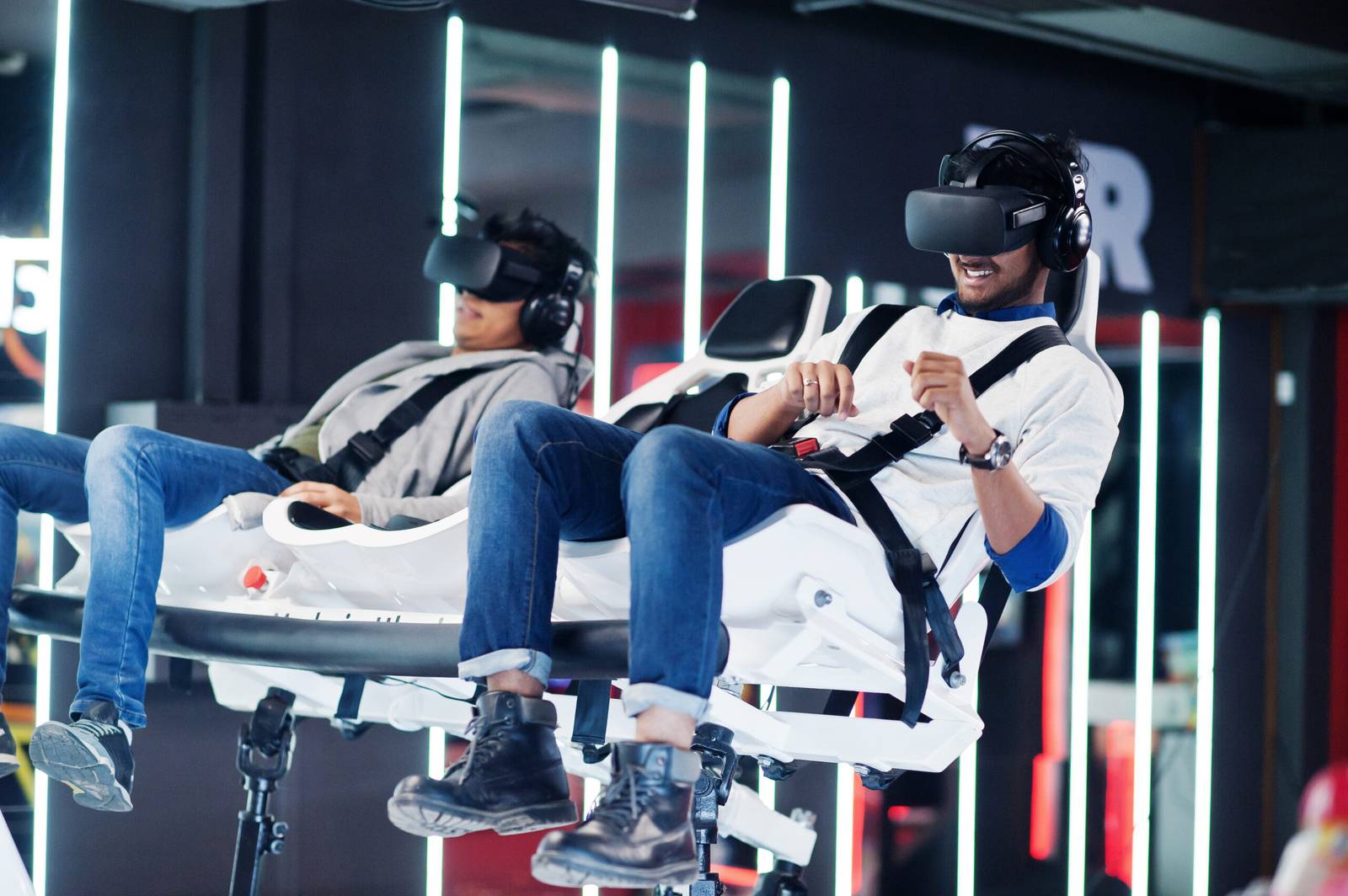Gaming Industry Trends: From Esports to Virtual Reality Gaming

by Web Digital
The gaming industry, once seen as a niche hobby, has transformed into a global powerhouse, rivalling and often surpassing the revenue generated by the movie and music industries combined. As technology continues to advance, the world of gaming evolves with it. From the rise of esports to the emergence of virtual reality gaming, this article explores the trends shaping the gaming industry and its exciting future.
1. Esports: Competitive Gaming Takes Center Stage
Esports, or electronic sports, has catapulted to the forefront of the gaming world. These organized, competitive video gaming events attract millions of viewers worldwide. Esports tournaments feature professional players and teams competing in games like League of Legends, Dota 2, and Counter-Strike: Global Offensive for substantial cash prizes.
The growth of esports is phenomenal, with dedicated arenas, sponsorships from major brands, and live broadcasts on platforms like Twitch and YouTube. Esports have also entered the mainstream consciousness, with universities offering esports scholarships and traditional sports teams investing in esports franchises.
2. Mobile Gaming: On-the-Go Entertainment
Mobile gaming has risen as a dominant force within the gaming industry. The accessibility and convenience of smartphones and tablets have transformed gaming into an on-the-go activity. Games such as “Pokémon GO,” “Candy Crush Saga,” and “Among Us” have captivated the interest of millions of players across the globe.
Mobile gaming generates substantial revenue through in-app purchases and ads. The success of mobile games has led to a surge in game development for mobile platforms, attracting both indie developers and major gaming companies.
3. Cross-Platform Gaming: Breaking Down Barriers
Cross-platform gaming is breaking down the barriers between different gaming ecosystems. Players on different devices, such as PCs, consoles, and mobile, can now play together in the same virtual worlds. Games like “Fortnite,” “Minecraft,” and “Rocket League” have embraced cross-platform play, fostering a more inclusive and connected gaming community.
4. Cloud Gaming: Gaming Without Boundaries
Cloud gaming, also known as game streaming, is reshaping the gaming landscape. Services like Google Stadia, NVIDIA GeForce NOW, and Xbox Cloud Gaming allow players to stream high-quality games directly to their devices, eliminating the need for expensive gaming hardware.
Cloud gaming has the potential to make high-end gaming experiences accessible to a broader audience, as players no longer need powerful gaming PCs or consoles to enjoy cutting-edge titles.
5. Virtual Reality (VR) Gaming: Immersive Experiences
Virtual reality gaming immerses players in a digital world, blurring the lines between reality and fiction. VR headsets like the Oculus Rift, HTC Vive, and PlayStation VR provide players with a 360-degree gaming experience, allowing them to interact with the virtual environment using motion controllers.
Games like “Half-Life: Alyx” and “Beat Saber” have showcased the potential of VR gaming, offering immersive storytelling and physically engaging gameplay. As technology continues to advance, VR gaming is expected to become more accessible and offer even more realistic experiences.
6. Augmented Reality (AR) Gaming: Merging Real and Digital Worlds
Augmented reality gaming blends the real world with digital elements. Games like “Pokémon GO” and “Minecraft Earth” use AR technology to superimpose virtual objects onto the player’s physical environment. Players can explore their neighbourhoods and interact with virtual creatures and structures.
AR gaming extends beyond entertainment, with applications in education, marketing, and tourism. The ability to overlay digital information in the real world opens up a world of possibilities for innovative experiences.
7. Indie Game Renaissance: Creativity Flourishes
The indie game development scene is experiencing a renaissance, with small teams and solo developers creating innovative and unique gaming experiences. Games like “Hollow Knight,” “Celeste,” and “Undertale” have gained critical acclaim and a dedicated fan base, proving that creativity and passion can rival big budgets and production values.
Crowdfunding platforms like Kickstarter and indie-friendly marketplaces like Steam have empowered indie developers to bring their visions to life. As a result, the gaming industry is more diverse and vibrant than ever before.
8. Social Gaming: Connecting Friends and Communities
Social gaming has become a cornerstone of the gaming experience. Multiplayer games, voice chat, and social features within games allow players to connect with friends and form communities. Games like “Fortnite” and “Among Us” have become social hubs where players come together to compete, collaborate, and socialize.
Social gaming has also led to the rise of gaming influencers and content creators on platforms like YouTube and Twitch, where millions of viewers tune in to watch their favourite gamers play and interact.
9. Sustainability and Ethics: Industry Challenges
As the gaming industry grows, it faces challenges related to sustainability and ethical considerations. These include concerns about the environmental impact of gaming hardware, issues related to loot boxes and microtransactions, and the need for greater diversity and inclusion in game development and representation within games.
Sustainability efforts, such as energy-efficient gaming consoles and responsible production practices, are increasingly important. Ethical considerations include addressing addiction, promoting fair monetization models, and creating games that reflect the diversity of players.
10. The Future of Gaming: Beyond Imagination
The future of gaming holds the promise of even more thrilling advancements. Emerging technologies like augmented reality glasses, haptic feedback devices, and neural interfaces are on the horizon, opening up new possibilities for immersive gaming experiences.
Artificial intelligence and machine learning are also poised to transform game design, creating dynamic and responsive virtual worlds that adapt to each player’s actions and preferences.
In conclusion, the gaming industry is experiencing a period of unprecedented growth and innovation. From sports to virtual reality gaming, the trends shaping the industry reflect the evolving tastes and expectations of players worldwide. As technology continues to advance, the possibilities for gaming are limited only by our imagination, promising a future where gaming experiences are more immersive, inclusive, and accessible than ever before.
Recommended Posts

The Best Email Marketing Platforms for Canadian Users
September 27, 2025

How to Use Google Business Profile for Local SEO
September 26, 2025

Website Maintenance Checklist for Canadian Small Businesses
September 26, 2025
